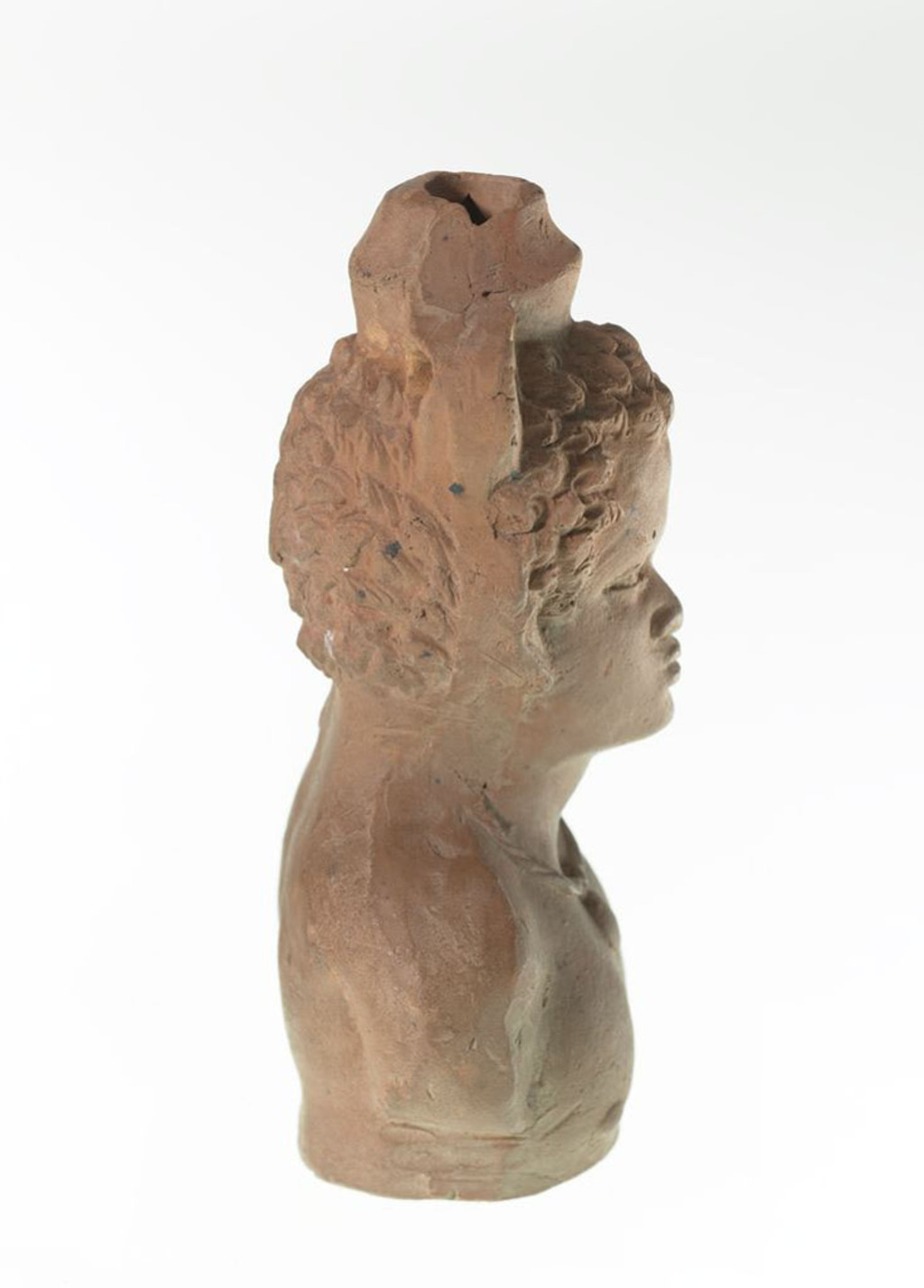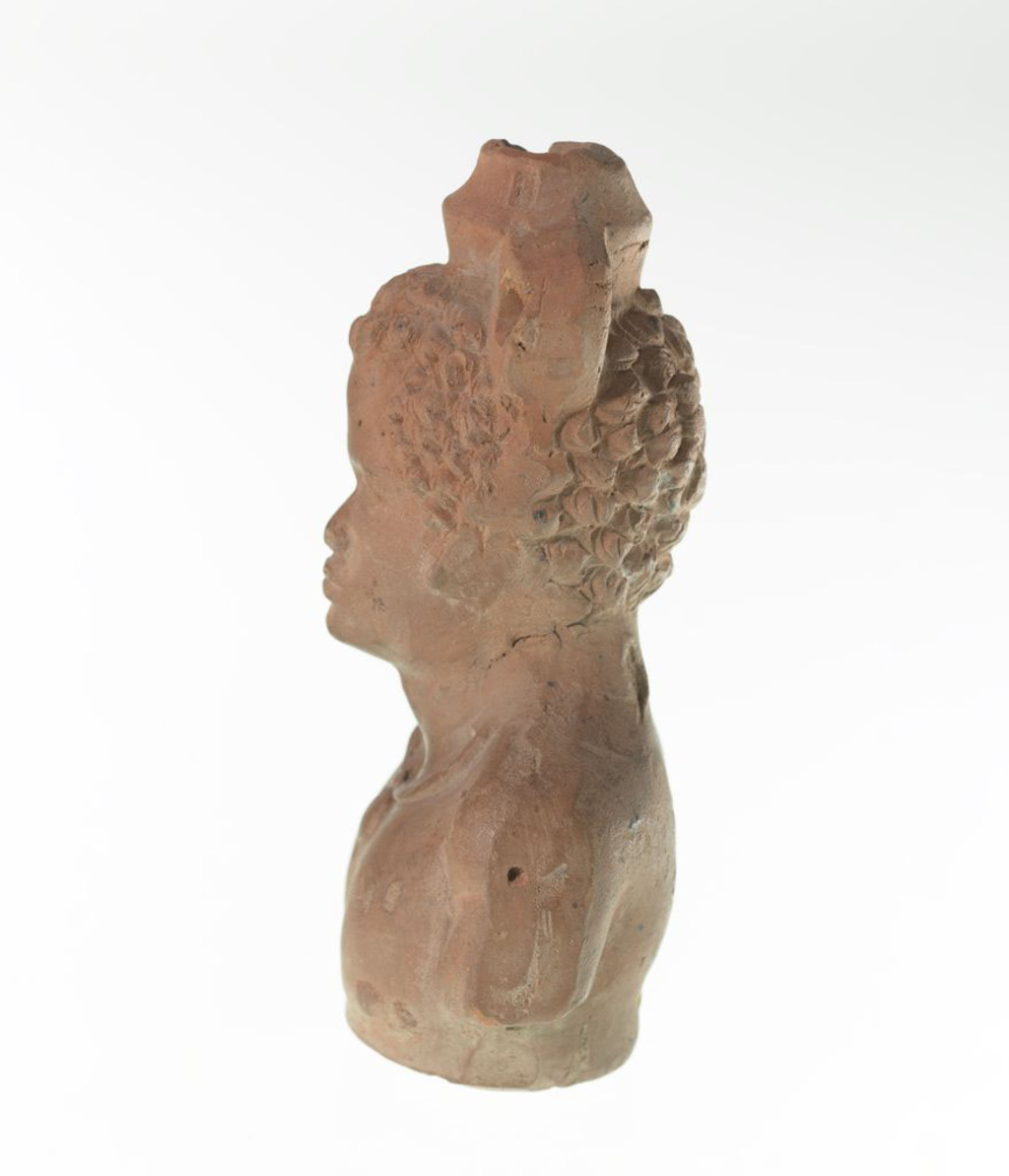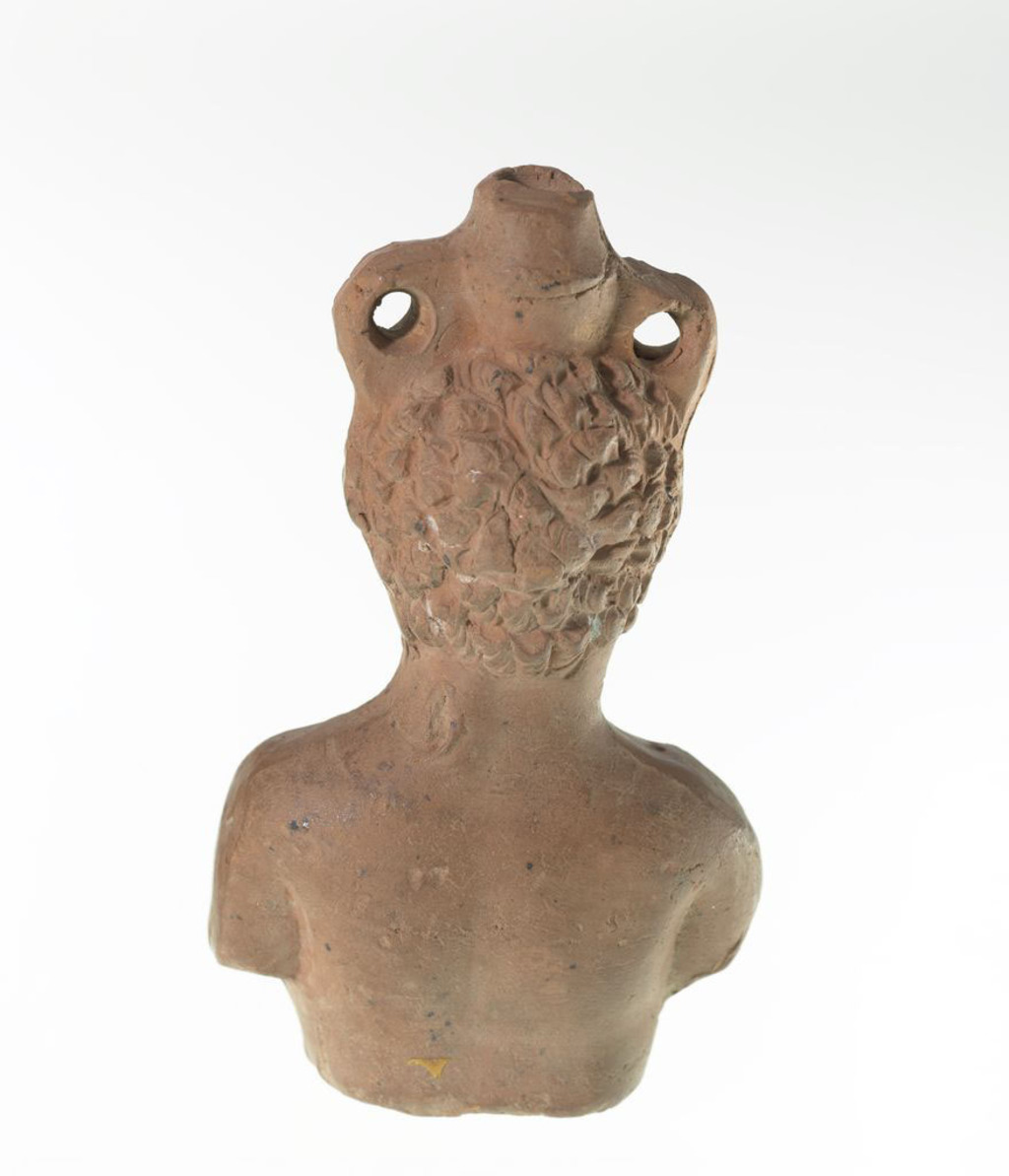This small perfume container called a balsamarium (plural balsamaria) features the bust of a Black African male that ends at the torso. The figure has curly hair, a high forehead, and a wide, flat nose. The pupil of each eye is indented, as are the nostrils and ends of some of the spirals in the hair. He has a bare chest with nipples indicated. He wears a twisting or corded necklace with a round tag on it. On his head, where the spout of the vessel appears, is a small storage jar with exaggerated and pierced handles, through which a leather strap could have been tied (similar to several other vases in the Menil Collection, such as Y 105.03).
The figure portrayed may be an enslaved person. Slavery in the Hellenistic and Roman world took a variety of forms. It was not exclusively tied to race or ethnicity, but more often to conquest, birth, or debt. Enslaved people could earn or buy their freedom in some circumstances. While some slaves had valuable skills that lead to advantages, the living and working conditions for most were harsh. This figure wears a necklace that indicates enslavement, generally referred to as a bulla. The slave collar version of this type of necklace typically had a tag (rather than a locket that Roman children wore) that was inscribed with the name of the enslaver and the reward for returning a runaway slave. It is likely that this object was a small personal item, which scholar Jennifer Gates-Foster noted could be used to demonstrate the prestige of having a slave as a perfume-bearer.
Like many other terracotta balsamaria, this piece was created using a mold. The crisp details suggest that it was made while the mold was new, as details typically dull with use of the mold. This is particularly evident in the sharp lines of the collar, eyes, nose, lips, and hair.







